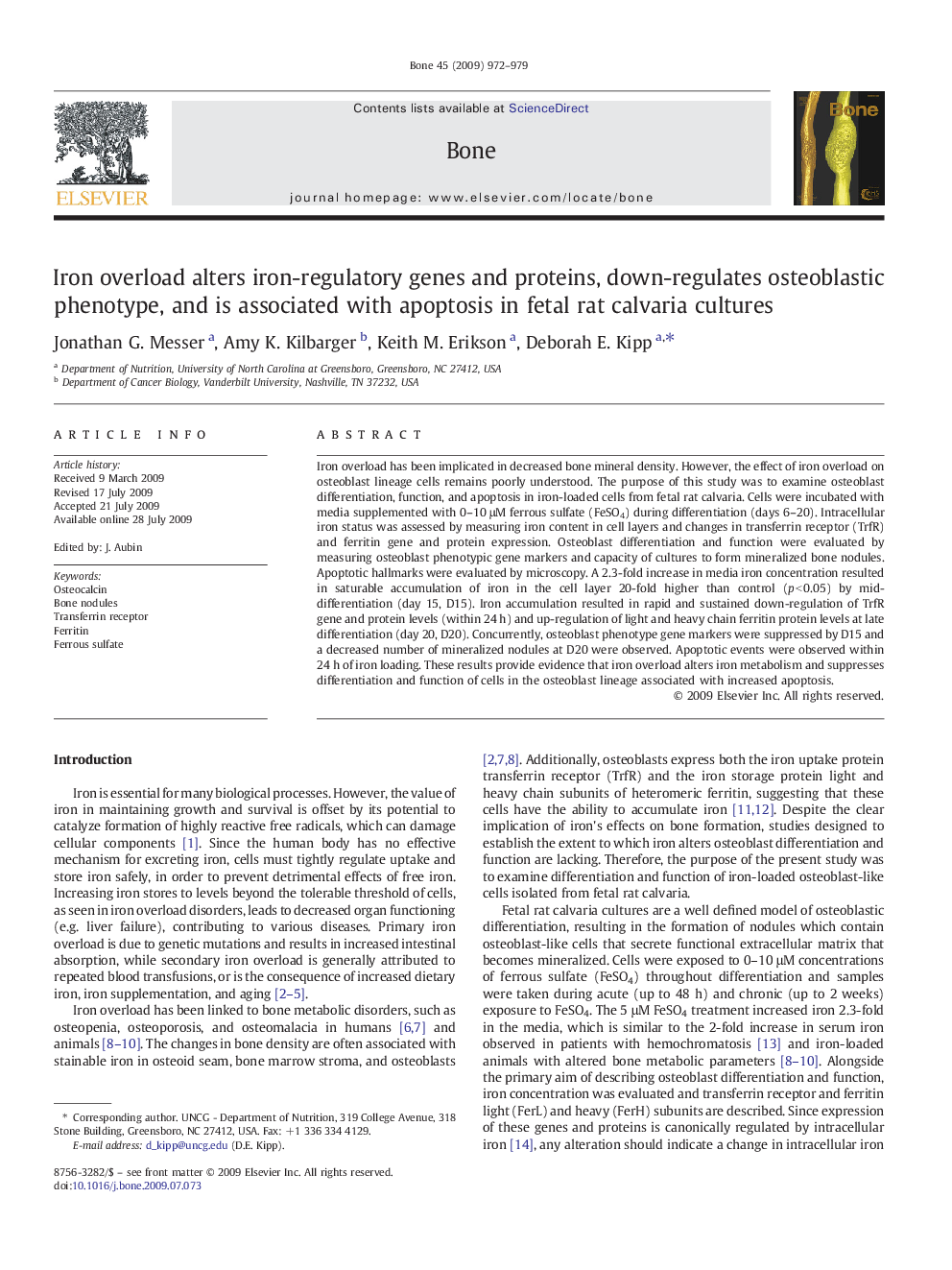| Article ID | Journal | Published Year | Pages | File Type |
|---|---|---|---|---|
| 2781710 | Bone | 2009 | 8 Pages |
Iron overload has been implicated in decreased bone mineral density. However, the effect of iron overload on osteoblast lineage cells remains poorly understood. The purpose of this study was to examine osteoblast differentiation, function, and apoptosis in iron-loaded cells from fetal rat calvaria. Cells were incubated with media supplemented with 0–10 μM ferrous sulfate (FeSO4) during differentiation (days 6–20). Intracellular iron status was assessed by measuring iron content in cell layers and changes in transferrin receptor (TrfR) and ferritin gene and protein expression. Osteoblast differentiation and function were evaluated by measuring osteoblast phenotypic gene markers and capacity of cultures to form mineralized bone nodules. Apoptotic hallmarks were evaluated by microscopy. A 2.3-fold increase in media iron concentration resulted in saturable accumulation of iron in the cell layer 20-fold higher than control (p < 0.05) by mid-differentiation (day 15, D15). Iron accumulation resulted in rapid and sustained down-regulation of TrfR gene and protein levels (within 24 h) and up-regulation of light and heavy chain ferritin protein levels at late differentiation (day 20, D20). Concurrently, osteoblast phenotype gene markers were suppressed by D15 and a decreased number of mineralized nodules at D20 were observed. Apoptotic events were observed within 24 h of iron loading. These results provide evidence that iron overload alters iron metabolism and suppresses differentiation and function of cells in the osteoblast lineage associated with increased apoptosis.
